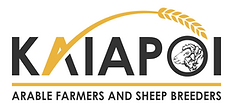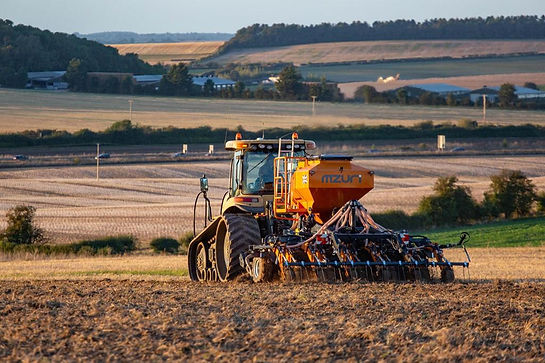

Arable
Spread across four arable farms, Kaiapoi's
arable thrives under a variety of soil types
from light chalks and rolling hills around
Baldock through gravels in Ware to some
heavy underdrained clays in Clothall.
New farms to us get a big dose of TLC when we take them on, hedges, ditches and drains are restored. Any buildings we can make use of get an upgrade and any opportunity to implement a Countryside Stewardship Scheme is grabbed and optimized for the good of the soil, the wildlife, the land owner and us the farmers.
On the arable ground we aim to grow 6 crops in 4 years on lighter soils, two of these are grazing crops overwinter for the sheep, so the rotation might be: winter wheat, grazing oats and berseem clover, spring barley, winter oats, stubble turnips, peas. We direct drill all our cover crops and we have just purchased a Mzuri strip till drill for our main arable crops. We do understand the need for reduced cultivations whilst optimizing soil health for growing the best crops.
On heavier soils we have a mixture of ways to improve blackgrass control, build soil organic matter and improve soil structure. We grow grass for seed which can be grazed once it has been harvested. We also use the mid-tier scheme to take poorer yielding and difficult to manage areas (perhaps where tile drainage has collapsed) out of arable production to put into grazeable leys such as red clover which suits the heavier ground.
We try to return as much straw as possible to build soil organic matter and reduce requirements for inorganic fertilisers – we do tend to bale spring barley straw as we find chopping this can lead to extra cultivation or seedling losses.


The Garford hoe is also fitted with a small seeding unit which we intend to use for sowing clover leys under the existing cereal crop, with the ability to sow the clover at the time of hoeing - just before canopy closure. This allows a clover ley to develop under the existing crop without competing with it, providing good weed competition, N fixation and high-quality standing feed for lambs once the crop has been harvested. If successful, we intend to look into keeping a living clover lay on the ground permanently with the ability to direct drill into it, providing valuable nitrogen, allowing us to reduce artificial nitrogen use, and also providing living roots in the soil year-round improving soil structure.
We try to use fertilizers and pesticides as sparingly as possible whilst still striving for maximum yields, allowing a variety of well timed cultivation to do the lions share of the work for us. in 2020 we added an interrow hoe to the armory to give us another non chemical weed control technique.
We are constantly thinking ahead with our farming practices as we face more environmental and regulatory challenges. An example of this is the purchase of a Garford Inter Row Hoe and teaming up with Trimble to get RTK accuracy for inter row hoeing to as narrow as 125mm row spacing. With the constant pressure being put on Glyphosate use and herbicide resistance to tough weeds such as black grass we are trying to adopt best farm practices with a combination of effective chemistry options used sparingly and strategic mechanical weeding with the highly technical inter row hoe.